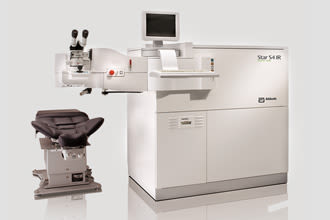The excimer laser is a next-generation laser that incorporates the most avant-garde technology to be able to carry out refractive surgery operations using the Lasik technique with maximum precision and safety.
What Is The Lasik Technique?
It is the type of operation most used to correct defects such as myopia or astigmatism because it combines safety and efficacy and is very minimally invasive.
The Lasik technique consists of lifting a very thin layer of corneal tissue to be able to modify the cornea with an excimer laser, correcting the defect that prevents the images from being projected on the retina. Thus, we need to take note of the Lasik surgery: pros and cons.
The Lasik technique is especially recommended for:
- Low, medium and moderately high myopia (between 1 and 10 diopters)
- Low and medium hyperopia (between 1 and 5 diopters)
- All kinds of astigmatisms
The Advantages Of The Excimer Laser
As we said at the beginning of the post, the excimer laser is a last-generation device that incorporates the most advanced technology, which gives it the following advantages:
- Maximum security: It incorporates an eye movement detection system (eye-tracker).
- Atmospheric control around the eye: This reduces the chances of getting an infection and gains even more precision.
- Recovery is accelerated: With the excimer laser, except for very rare complications, the patient is recovered in a couple of days.
- Faster: With this laser, the intervention time is reduced.
All these series of advantages translate into greater comfort and reduction of stress and safety for the patient since they are sure that, even if an inappropriate eye movement occurs for whatever reason, the laser will continue to maintain its precision.
Care After An Excimer Laser Intervention
In general, the postoperative period after excimer laser intervention is usually very fast, and complications rarely arise. Although it is true that, until reaching the maximum level of visual acuity, temporarily for a few weeks, it is possible to notice certain alterations in vision such as halos or flashes and problems to see optimally in certain conditions, such as at night or in environments in insufficient light.
On the other hand, it is essential to follow the treatment prescribed by the ophthalmologist, which does not usually go beyond the application of eye drops in the form of drops to avoid infections, inflammation and artificial tears to alleviate the discomfort of the first days.
It is also important to gradually return to leisure and work activities, avoiding, in the first fifteen days, straining your eyes too much and, of course, not making sudden movements or contact or risk sports.


